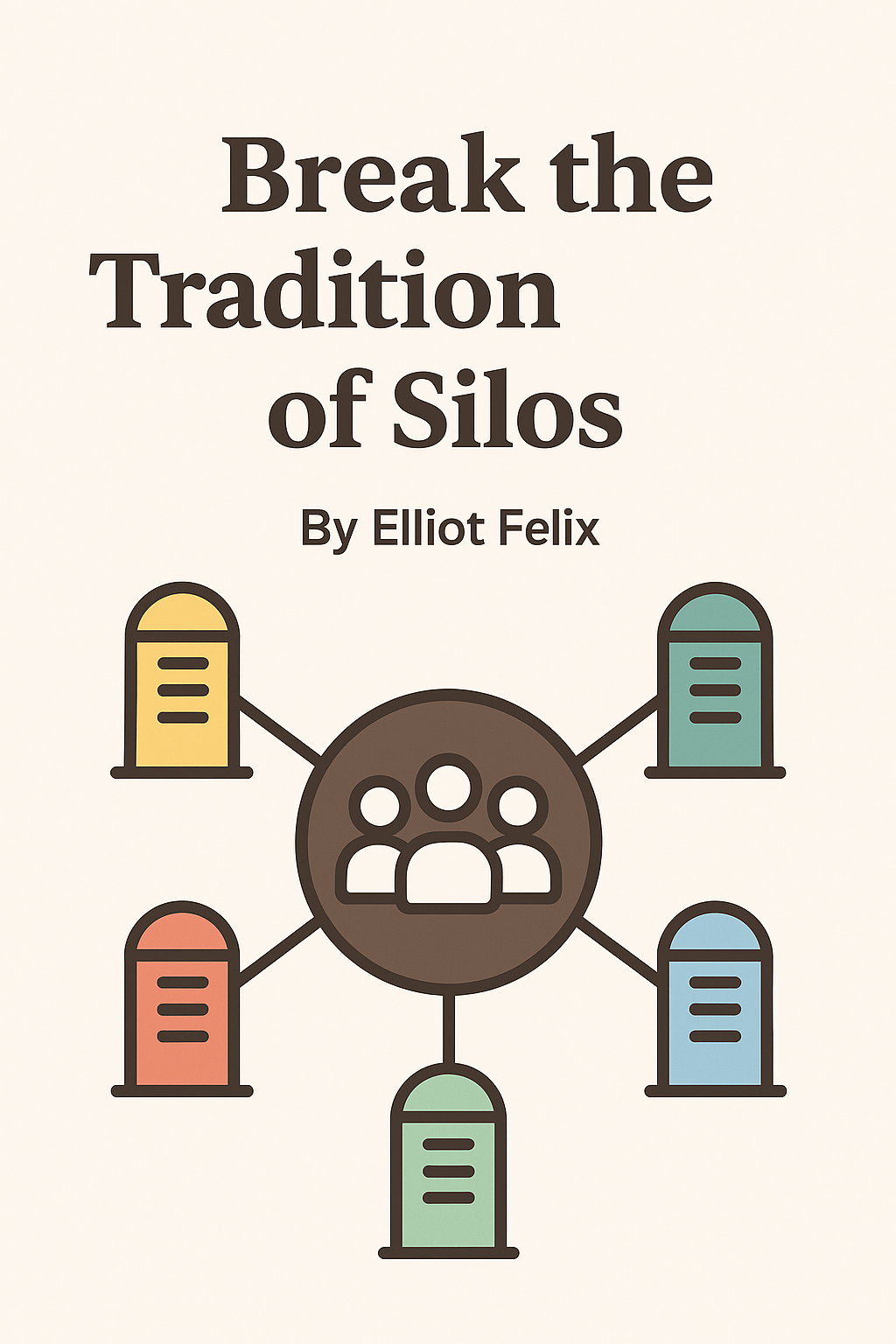Break the Tradition of Silos

At the kickoff meeting to create a student success hub for a top university, different functions were gathered around the table. One by one, leaders from the tutoring center, information technology, math lab, writing center, and writing lab each introduced themselves.
Were you puzzled that they had both a writing center and a writing lab? As the consultant leading the project, I was too. It turned out that both offered writing help to students, but they were located in different buildings, used different technology, reported to different people, and didn’t work together.
While colleges and universities have wonderful traditions from convocation to graduation, they also have a tradition of well-intentioned but wasteful silos that stifle students and waste time and money. They are decentralized places that adapt to change by adding programs and people – and more space and technology to support them.
Continuous expansion has left us with competing courses, sprawling campuses and technology, unsustainable costs, and stagnating students. In previous eras of ever-expanding enrollments and research funding, this was questionable. Now it’s unconscionable with the new administration cutting research funding, reducing international student enrollments, and scrutinizing institutional operations.
There are good reasons for adding personnel: regulatory compliance, a growing research enterprise, and advancement to offset declining public funding. But it’s not sustainable. Over the last 40 years, faculty grew slightly faster than enrollment, but administration grew at 2.1 times the pace of enrollment, and other professionals grew at 5.7 times enrollment. Campus facilities have grown by more than double the rate enrollment has over the last two decades. Since 2013, technology spending per person has increased 113% among colleges and 32% among research universities.
Despite all this investment, completion rates have only gone up about 8 percentage points in the last 20 years, public confidence and perceived value are low, and college closures are looming – with roughly 40% of private non-profit institutions and 20% of public institutions running deficits.
At a time when enrollment and funding are uncertain, colleges and universities must break down silos, collaborate with peers, and partner with companies instead of continuously adding programs and people.
Consolidating, collaborating, and partnering starts with institutional strategy. But at most colleges and universities, strategic planning convenes infinite meetings only to result in long documents and anodyne statements about innovation and excellence. Few focus institutions to help them stand out. They keep spreading people thin doing more with less instead of helping them say “no” so they can do less with more.
The right strategy helps break down silos and centralize shared resources to decrease costs and increase student success. Reviewing academic programs regularly identifies existing programs to cut and new ones to develop. University of the Pacific went from 29 different technology systems to five, reducing their tech budget by 45%. A study of four community college systems found a 3% average increase in retention simply from consolidating student support services to one location.
Differentiation unlocks collaboration with peer institutions. When colleges and universities stop trying to be all things to all people and instead focus on where their unique strengths align with needs, they can collaborate with other institutions instead of competing for students and funding. Collaboration can start on back-office functions like finance, HR, and IT like what’s happening at the system-level in North Carolina, Ohio, Indiana, and New Mexico. It can extend to academics through student support services, online course sharing, and research consortia.
Partnering with companies is just as critical as collaborating within an institution and with peers. 81% of students want real-world projects with companies in their classes but only 30% of instructors offer them. Institutions focused on experiential learning with industry like Illinois Tech and Northeastern are prospering. Partnerships can cover curricula and career pipelines like Quinnipiac University’s partnership with Hartford Healthcare. Consider the alternative to partnering: reinventing the wheel, losing revenue, offering outdated academic programs, and shrinking career pipelines.
With so much uncertainty, colleges and universities cannot get stuck in endless cycles of internal contingency planning. They must make the changes now that are good practice no matter how the economic and political winds shift. Make the hard choices to focus. Look across your institution to break down silos and consolidate duplicate systems, programs, spaces, and personnel. Find institutional and industry partners to provide expertise and increase efficiency through a network effect instead of going it alone.
Today, that student success hub I planned is humming, blending study space and support services. Staff from across the university are working together to help students with research, data, writing, communication, coursework, and career development. The writing center and lab joined forces. If they can do it, others can too. It’s time to end the tradition of silos and create better connected colleges and universities where students succeed and society benefits.
Author's Note: While I value the analysis about how non-instructional staff have grown (linked above), I don’t like or agree with the article's odious title or tone. So citation ≠ endorsement!


























